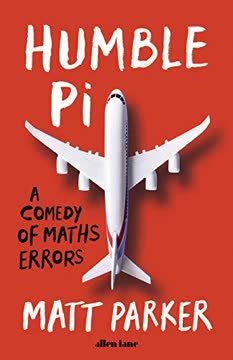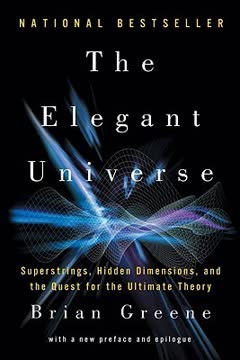Key Takeaways
1. Scientific curiosity can lead to unexpected and fascinating insights
Sometimes it's nice not to destroy the world for a change.
Curiosity drives discovery. Scientific inquiry, even when applied to seemingly ridiculous scenarios, can yield profound insights about the world around us. Randall Munroe's approach of tackling absurd hypothetical questions demonstrates that there's value in exploring the extremes of physical possibility. These thought experiments often reveal unexpected connections between different scientific disciplines and shed light on the fundamental principles governing our universe.
Learning through extremes. By examining scenarios like global windstorms or massive raindrop impacts, we gain a deeper appreciation for the delicate balance of forces that shape our everyday experiences. This approach also highlights the importance of scale in scientific understanding – what seems impossible on a human scale may be commonplace on cosmic or subatomic levels.
Examples of unexpected insights:
- The difficulty of harnessing lightning for power generation
- The surprising resilience of Earth to large-scale disturbances
- The complex interplay of forces in seemingly simple phenomena like stirring tea
2. Even seemingly absurd questions can reveal profound truths about physics
The human body can be drained of blood in 8.6 seconds given adequate vacuuming systems.
Absurdity breeds insight. Questions that initially seem ridiculous or impossible often lead to serious scientific exploration. By pushing the boundaries of what's physically possible, we gain a better understanding of the laws that govern our universe. Munroe's approach demonstrates that there's no such thing as a truly "stupid" question in science – even the most outlandish scenarios can teach us something valuable.
Thought experiments as tools. These absurd questions serve as thought experiments, allowing us to explore the consequences of physical laws in extreme conditions. They help scientists and laypeople alike to develop intuition about complex phenomena and identify the limits of our current understanding.
Benefits of exploring absurd questions:
- Reveals gaps in our knowledge
- Challenges assumptions and preconceptions
- Encourages creative problem-solving
- Makes complex physics concepts more accessible and engaging
3. Everyday objects and phenomena hold hidden complexities
If you liked it, then you should have moved a mass inside its Roche limit.
Complexity in simplicity. Even the most mundane objects and events in our daily lives are governed by intricate physical laws. Munroe's exploration of scenarios involving common items like teacups, hair dryers, and raindrops reveals the surprising depth of scientific principles at work in our everyday experiences.
Interconnected systems. These explorations highlight how seemingly simple phenomena are often the result of complex interactions between multiple physical systems. Understanding these connections can lead to a greater appreciation for the world around us and inspire further scientific inquiry.
Examples of hidden complexity:
- The intricate fluid dynamics involved in stirring tea
- The surprising amount of energy contained in a single raindrop
- The complex interplay of forces that allow us to stand and move
4. The scale of the universe is mind-boggling and often counterintuitive
Space isn't like this: [image of Earth with space as a thin layer above]. Space is like this: [image of Earth as a tiny dot in vast emptiness].
Vastness beyond comprehension. The sheer scale of the universe, from subatomic particles to galactic superclusters, is often difficult for the human mind to grasp. Munroe's explorations of extreme scenarios help put these vast scales into perspective, highlighting how our intuitions often fail us when dealing with cosmic or microscopic phenomena.
Scale impacts physics. Different physical laws dominate at different scales, leading to counterintuitive results when we extrapolate familiar phenomena to extreme sizes or distances. Understanding these scale-dependent effects is crucial for accurately predicting and explaining natural phenomena.
Examples of scale-dependent phenomena:
- Quantum effects dominating at subatomic scales
- Relativistic effects becoming significant at high speeds or in strong gravitational fields
- Surface tension dominating fluid behavior at small scales
5. Human ingenuity can solve complex problems in creative ways
To get a long sunset, the strategy is simple: Wait for the date when the terminator will just barely reach your position. Sit in your car until the terminator reaches you, drive north to stay a little ahead of it for as long as you can (depending on the local road layout), then U-turn and drive back south fast enough that you can get past it to the safety of darkness.
Creativity in problem-solving. Many of the scenarios explored in the book require innovative solutions that combine knowledge from multiple scientific disciplines. This demonstrates the power of human ingenuity in tackling complex challenges, even in hypothetical situations.
Interdisciplinary approach. The most effective solutions often arise from combining insights from different fields of study. Munroe's approach showcases how physics, engineering, biology, and other disciplines can work together to address unique problems.
Examples of creative problem-solving:
- Using water to safely approach a super-dense object
- Designing a bridge made of Lego bricks to span the Atlantic
- Calculating the optimal strategy for experiencing the longest possible sunset
6. Safety should always be a primary concern in scientific exploration
Do not try any of this at home. The author of this book is an Internet cartoonist, not a health or safety expert. He likes it when things catch fire or explode, which means he does not have your best interests in mind.
Prioritize safety. While exploring extreme scenarios can be intellectually stimulating, it's crucial to remember the potential dangers involved in real-world experimentation. Munroe's frequent safety warnings serve as a reminder that scientific curiosity must always be tempered with caution and responsibility.
Theoretical vs. practical. Many of the scenarios explored in the book are purely theoretical and would be incredibly dangerous or impossible to replicate in reality. This highlights the importance of thorough risk assessment and proper safety protocols in actual scientific research and experimentation.
Key safety considerations:
- Proper training and expertise
- Appropriate safety equipment and containment measures
- Thorough risk assessment and mitigation strategies
- Compliance with legal and ethical guidelines
7. Mathematics and physics can explain and predict bizarre scenarios
There's a 1 in 10,000,000,000,000 chance that two of them will simultaneously call each other. At this point, probability will give up, and they'll both be struck by lightning.
Predictive power of science. Even in the most outlandish scenarios, mathematical models and physical laws can provide surprisingly accurate predictions. This demonstrates the robustness and universality of scientific principles, which can be applied to situations far beyond our everyday experiences.
Limitations of models. While mathematical models are powerful tools, they also have limitations. Exploring extreme scenarios helps identify the boundaries of our current theories and models, potentially leading to new discoveries and refinements in scientific understanding.
Examples of mathematical predictions in extreme scenarios:
- Calculating the energy release from a massive raindrop impact
- Modeling the behavior of a super-dense bullet
- Predicting the effects of global-scale phenomena like simultaneous jumping
8. The limits of technology and human capability are constantly expanding
Neutron stars are some of the densest objects you can find (outside of the infinite density of a black hole). They're crushed by their own immense gravity into a compact quantum-mechanical soup that's in some ways similar to an atomic nucleus the size of a mountain.
Pushing boundaries. The book explores scenarios that often push the limits of current technology and human capability. This serves as a reminder that what seems impossible today may become reality in the future, as our scientific knowledge and technological prowess continue to advance.
Inspiration for innovation. By examining extreme scenarios, we can identify potential areas for technological development and scientific research. These thought experiments can inspire new approaches to solving real-world problems and push the boundaries of what we consider possible.
Areas of expanding capabilities:
- Space exploration and propulsion technologies
- Materials science and engineering
- Energy production and storage
- Computing power and artificial intelligence
9. Understanding extreme scenarios helps us appreciate normal conditions
The upshot is that for raw bandwidth of FedEx, the Internet will probably never beat SneakerNet. However, the virtually infinite bandwidth of a FedEx-based Internet would come at the cost of 80,000,000-millisecond ping times.
Contrast reveals complexity. By exploring extreme scenarios, we gain a deeper appreciation for the delicate balance of forces and conditions that make our everyday lives possible. This perspective can foster greater awareness of environmental issues and the importance of maintaining Earth's habitable conditions.
Appreciating normalcy. Understanding the potentially catastrophic consequences of even small changes to our environment highlights the remarkable stability of Earth's systems. This knowledge can inspire greater efforts to preserve and protect our planet's delicate equilibrium.
Insights from extreme scenarios:
- The importance of Earth's atmosphere in protecting us from cosmic radiation
- The crucial role of gravity in maintaining planetary habitability
- The significance of Earth's magnetic field in shielding us from solar wind
10. Scientific exploration often raises more questions than it answers
Mental note: I'm going to start saying this when people sneeze.
Endless curiosity. The exploration of hypothetical scenarios often leads to new questions and areas of inquiry. This demonstrates the self-perpetuating nature of scientific curiosity – each answer we uncover tends to reveal new mysteries and avenues for investigation.
Embracing uncertainty. The book's approach highlights the importance of embracing uncertainty and being comfortable with not having all the answers. This mindset is crucial for scientific progress, as it encourages continued exploration and prevents complacency in our understanding of the world.
Examples of new questions raised:
- The behavior of matter under extreme conditions
- The limits of human adaptation to different environments
- The potential for life in seemingly inhospitable cosmic environments
Last updated:
FAQ
What's "What If?: Serious Scientific Answers to Absurd Hypothetical Questions" about?
- Absurd questions explored: The book by Randall Munroe explores a series of absurd hypothetical questions submitted by readers, providing scientific answers to each.
- Scientific approach: Munroe uses his background in physics and experience as a NASA roboticist to apply scientific principles to these whimsical scenarios.
- Humor and insight: The book combines humor with insightful scientific explanations, making complex topics accessible and entertaining.
Why should I read "What If?: Serious Scientific Answers to Absurd Hypothetical Questions"?
- Unique perspective: The book offers a unique blend of science and humor, making it an engaging read for those interested in both fields.
- Educational value: Readers can learn about scientific concepts and principles in a fun and approachable way.
- Creative thinking: It encourages creative thinking and curiosity by exploring unconventional questions and scenarios.
What are the key takeaways of "What If?: Serious Scientific Answers to Absurd Hypothetical Questions"?
- Science is fun: The book demonstrates that science can be both fun and informative, sparking curiosity about the world.
- Critical thinking: It emphasizes the importance of critical thinking and applying scientific methods to solve problems, no matter how absurd they may seem.
- Interdisciplinary approach: The book showcases how different scientific disciplines can be applied to answer a wide range of questions.
What are the best quotes from "What If?: Serious Scientific Answers to Absurd Hypothetical Questions" and what do they mean?
- "Nearly everyone would die. Then things would get interesting." - This quote from the "Global Windstorm" chapter highlights the dramatic and often humorous way Munroe presents potential outcomes of hypothetical scenarios.
- "The world is an absurd place; why not embrace it?" - Munroe encourages readers to accept and explore the absurdity of the world, using science as a tool for understanding.
- "It's not that the wind is blowing, it's what the wind is blowing." - This quote emphasizes the importance of context and details in scientific analysis, as seen in the "Global Windstorm" scenario.
How does Randall Munroe approach answering absurd questions in "What If?"?
- Scientific rigor: Munroe applies scientific principles and calculations to each question, ensuring that the answers are grounded in reality.
- Humor and creativity: He uses humor and creative thinking to make the explanations engaging and accessible.
- Interdisciplinary methods: Munroe draws on various scientific disciplines, including physics, chemistry, and biology, to provide comprehensive answers.
What is the "Global Windstorm" scenario in "What If?"?
- Earth stops spinning: The scenario explores what would happen if the Earth suddenly stopped spinning, but the atmosphere retained its velocity.
- Supersonic winds: It predicts that supersonic winds would devastate the planet, causing widespread destruction.
- Survival and aftermath: Munroe discusses potential survival strategies and the long-term effects on the planet's climate and geography.
How does "What If?" explain the concept of "Relativistic Baseball"?
- Baseball at light speed: The scenario examines what would happen if a baseball were pitched at 90% the speed of light.
- Catastrophic consequences: The immense speed would cause nuclear fusion with air molecules, resulting in a massive explosion.
- Scientific principles: Munroe uses this scenario to explain concepts like relativistic speeds, nuclear fusion, and the energy-mass relationship.
What is the "Periodic Wall of the Elements" in "What If?"?
- Elemental wall: The scenario imagines building a wall using cube-shaped bricks made of each element from the periodic table.
- Dangers and reactions: Munroe discusses the potential dangers and chemical reactions that would occur, such as explosions and toxic releases.
- Educational insight: This scenario provides insight into the properties and reactivity of different elements.
How does "What If?" address the question of "Everybody Jump"?
- Simultaneous jump: The scenario explores the effects if everyone on Earth jumped at the same time and landed simultaneously.
- Minimal impact: Munroe concludes that the impact on the Earth's motion would be negligible, but the social and logistical aftermath would be significant.
- Scientific explanation: The scenario illustrates principles of mass, force, and the conservation of momentum.
What is the "A Mole of Moles" scenario in "What If?"?
- Mole of moles: The scenario calculates the consequences of gathering a mole (6.022×10^23) of moles (the animal) in one place.
- Planet-sized mass: The mass would be comparable to a small planet, causing gravitational and environmental effects.
- Humorous exploration: Munroe uses this scenario to humorously explore concepts of mass, volume, and gravitational forces.
How does "What If?" explore the concept of "Laser Pointer"?
- Moon illumination: The scenario investigates whether pointing laser pointers at the Moon could change its color.
- Insufficient power: Munroe concludes that even with powerful lasers, the effect would be negligible compared to sunlight.
- Scientific principles: This scenario highlights the principles of light, energy, and the scale of astronomical distances.
What is the "Spent Fuel Pool" scenario in "What If?"?
- Swimming in a pool: The scenario examines the effects of swimming in a nuclear reactor's spent fuel pool.
- Radiation exposure: Munroe explains the potential radiation exposure and safety measures needed to survive.
- Scientific insight: This scenario provides insight into nuclear physics, radiation, and the safety protocols of nuclear facilities.
Review Summary
What If? offers hilarious and mind-bending scientific answers to absurd hypothetical questions. Readers praise Munroe's wit, creativity, and ability to explain complex concepts simply. Many found the book entertaining and educational, appreciating the blend of humor and science. Some critics felt the questions became repetitive or too focused on catastrophic scenarios. Overall, most reviewers enjoyed Munroe's unique approach to exploring scientific principles through outlandish scenarios, though a few found the content overwhelming or not to their taste.
What If? Series
Similar Books









Download PDF
Download EPUB
.epub digital book format is ideal for reading ebooks on phones, tablets, and e-readers.





